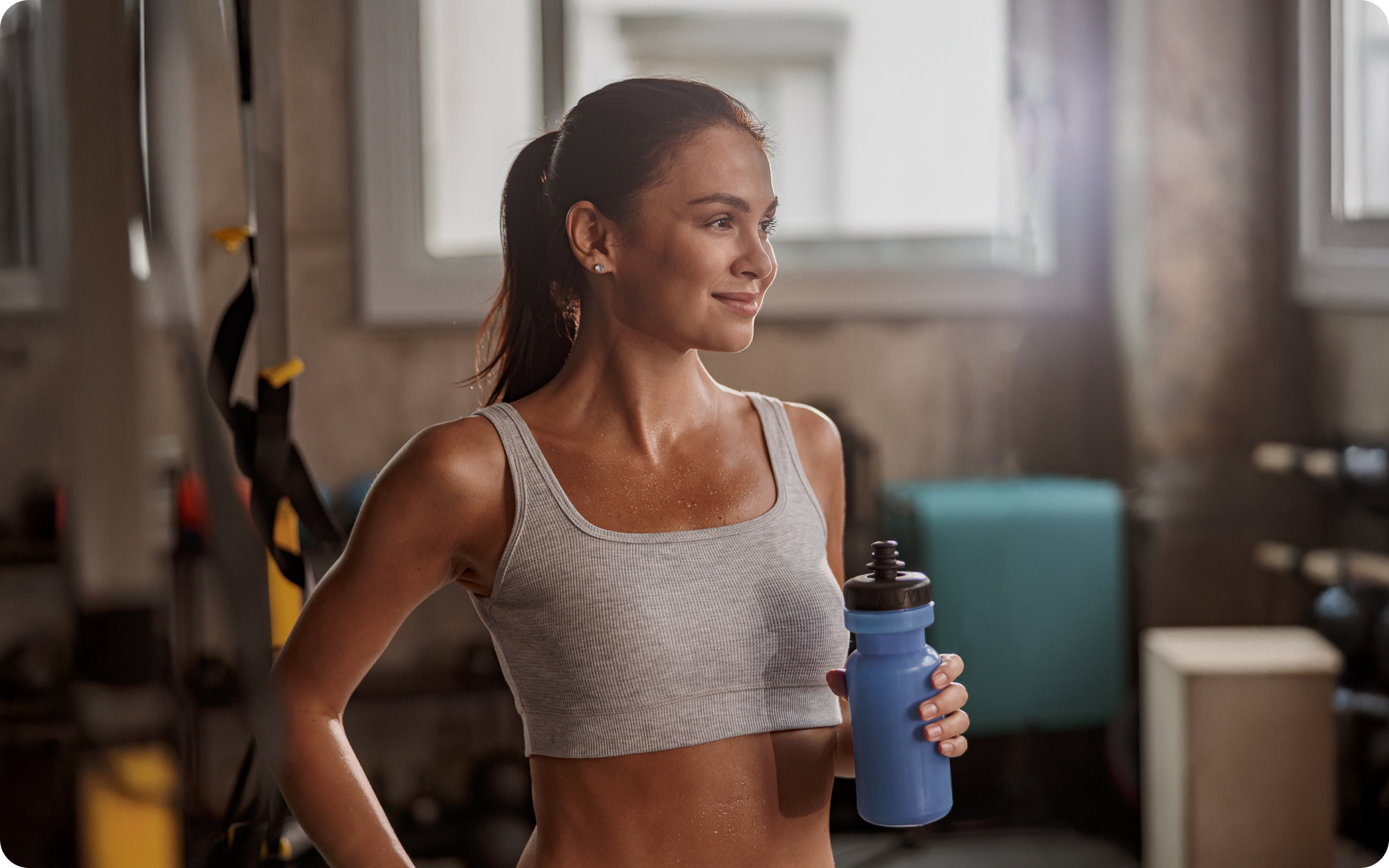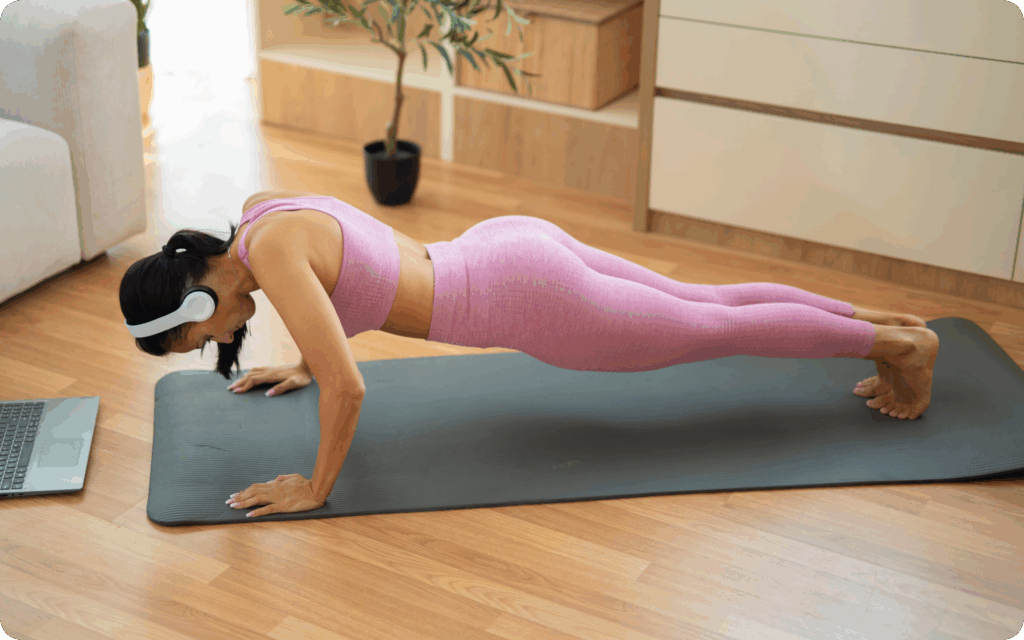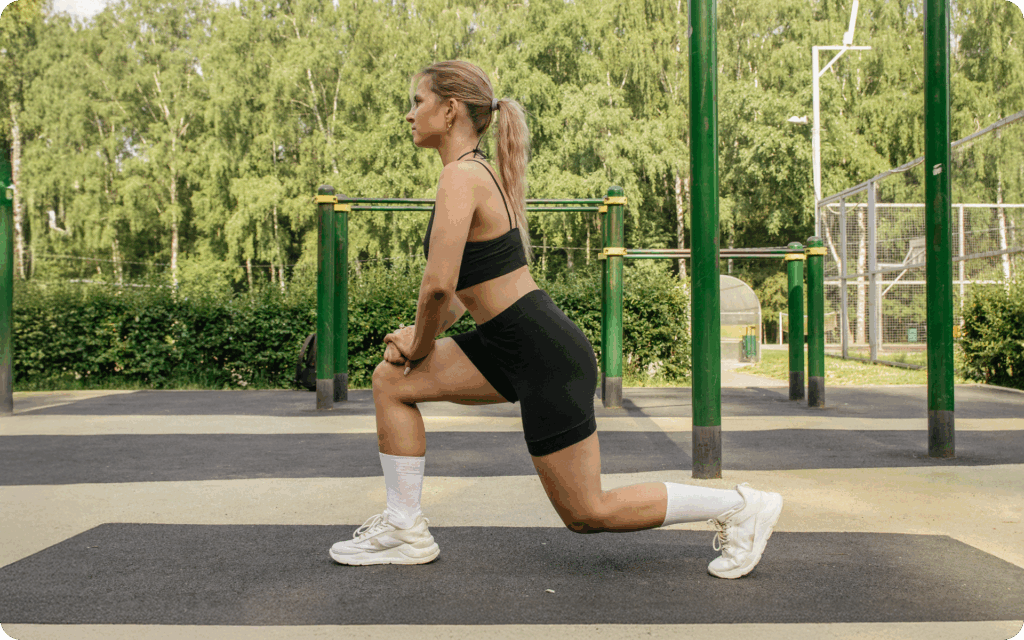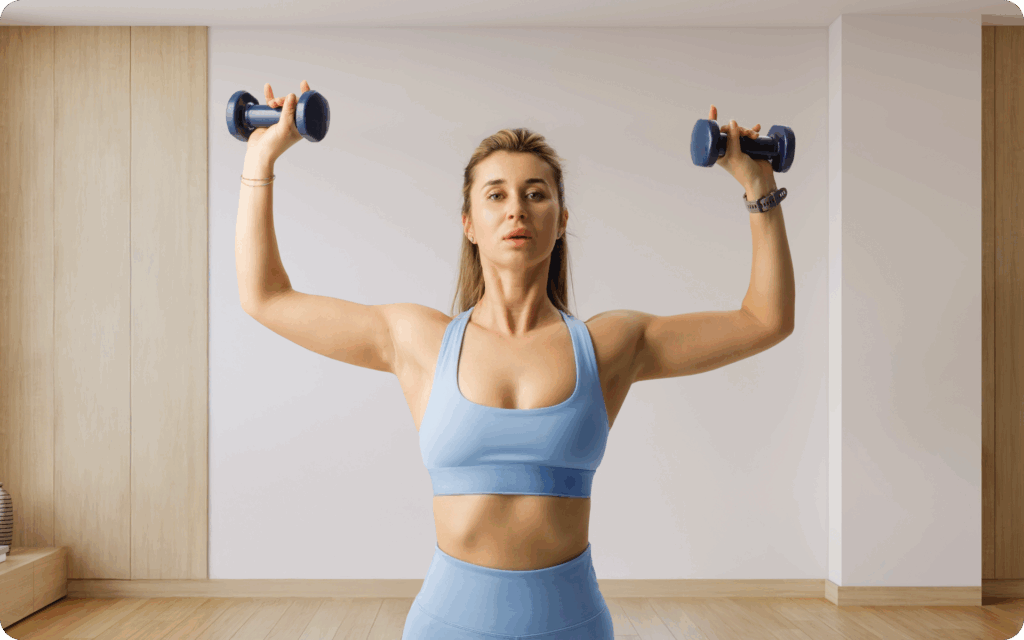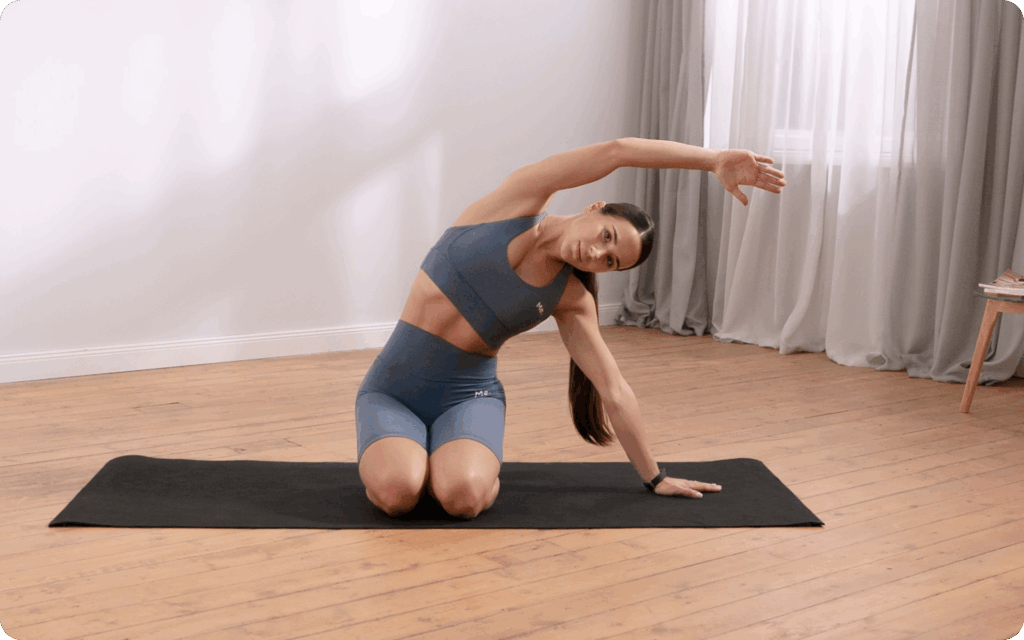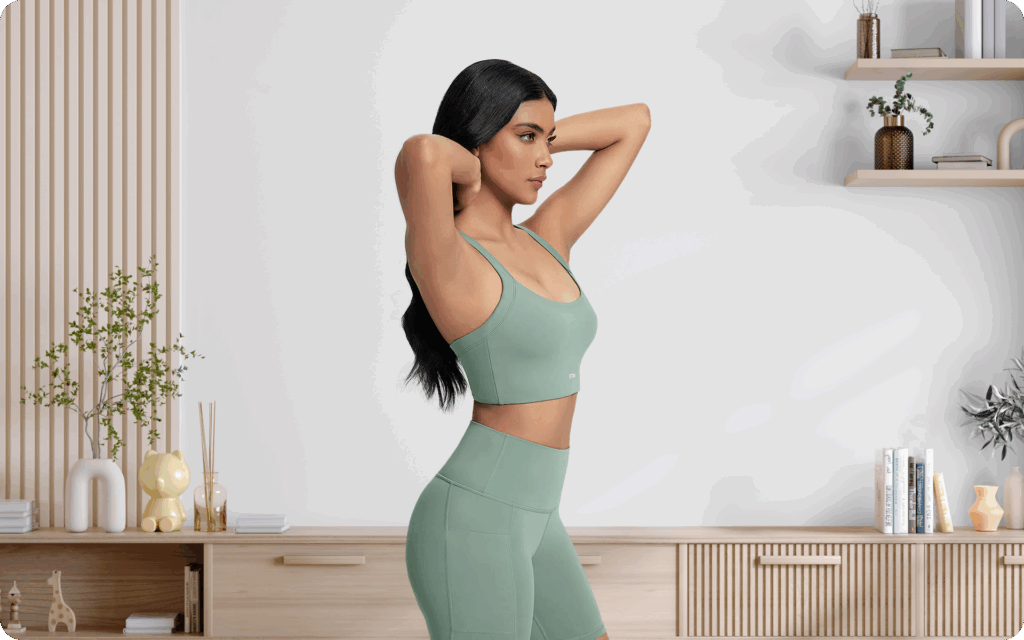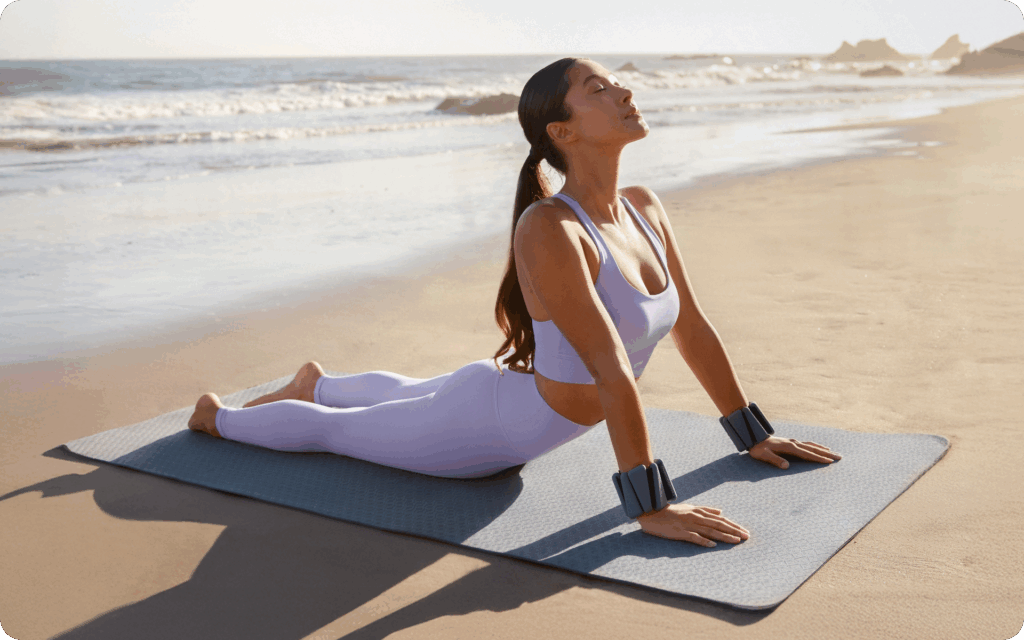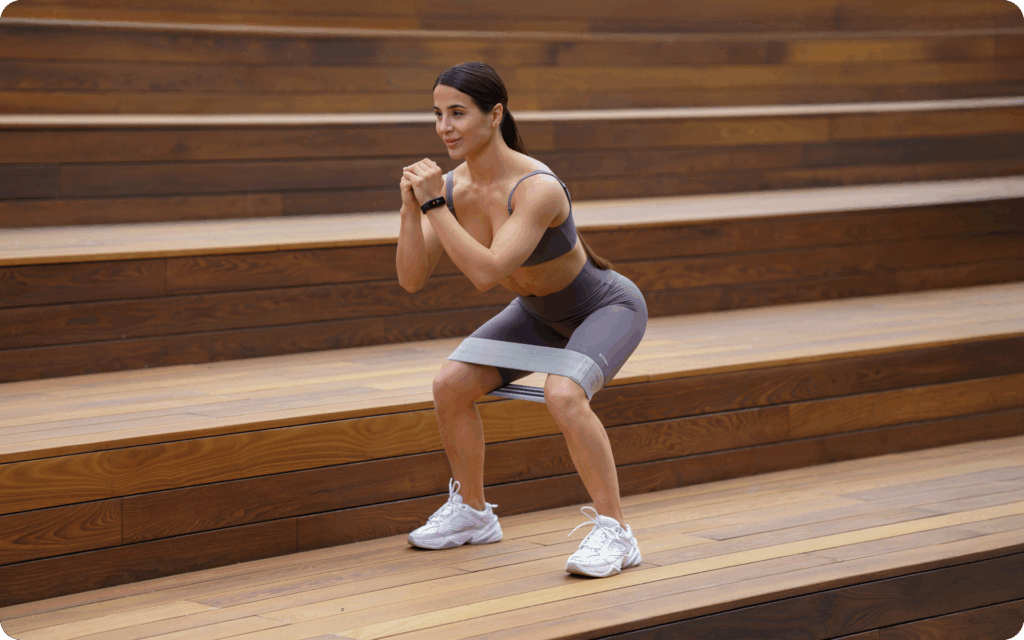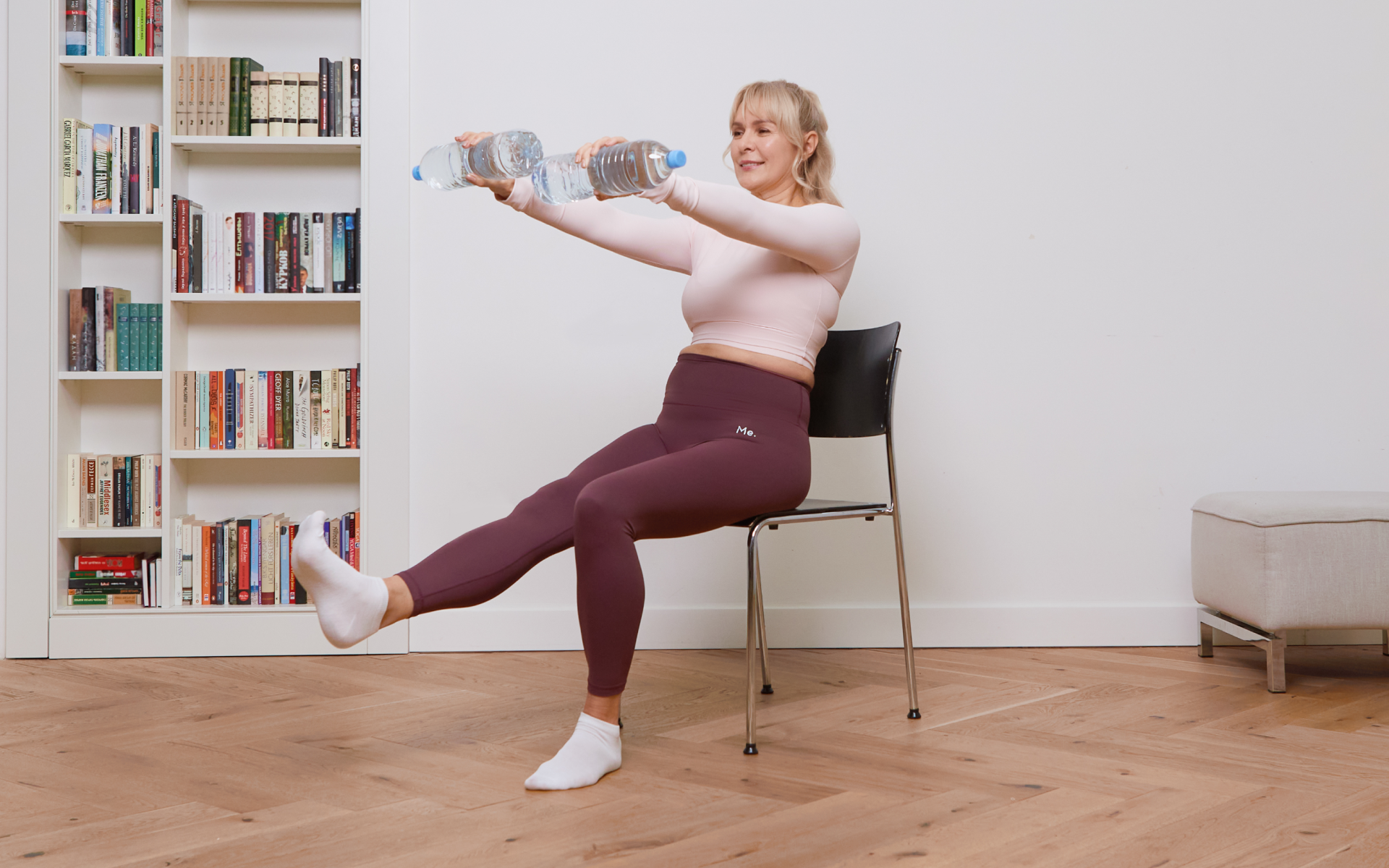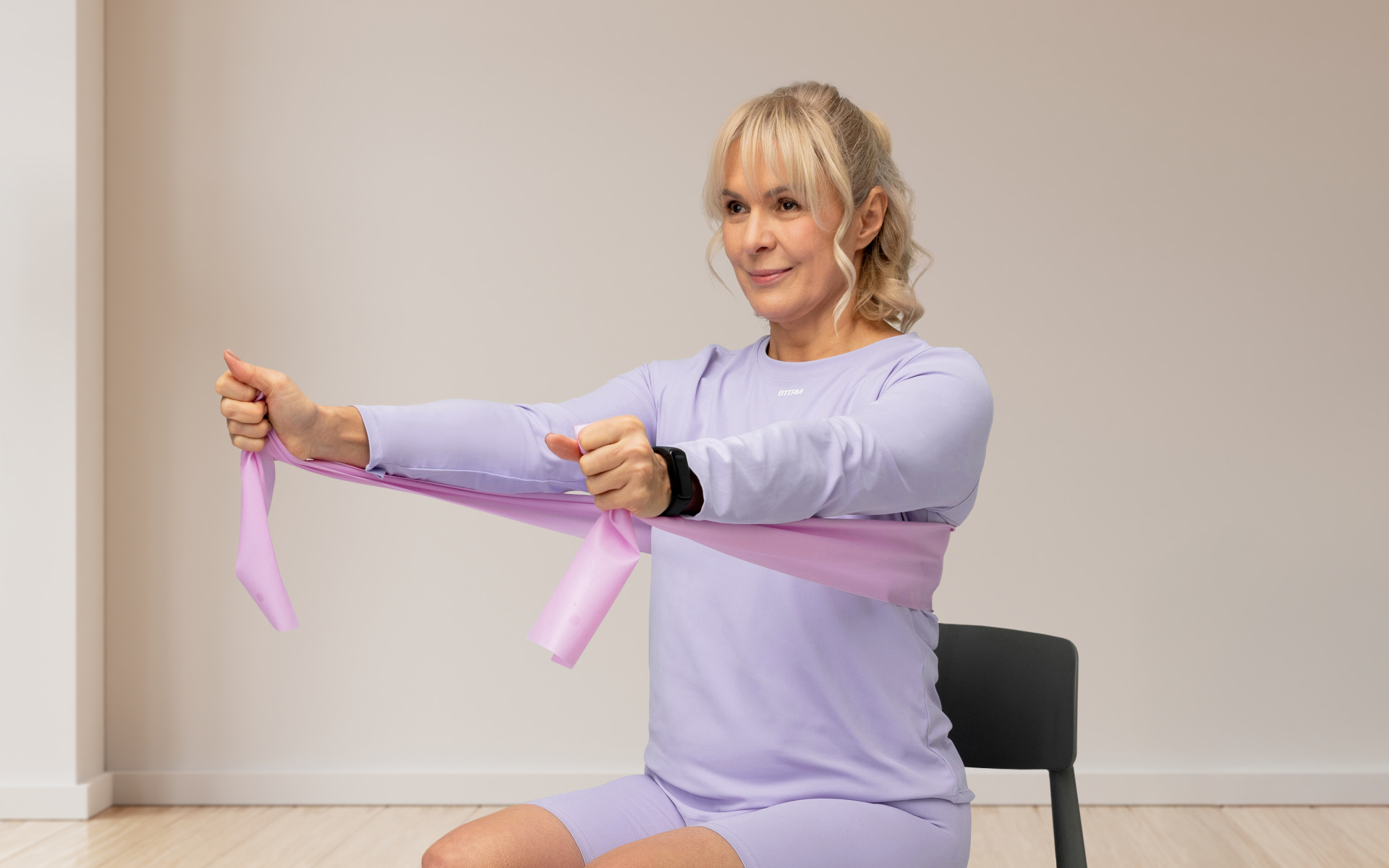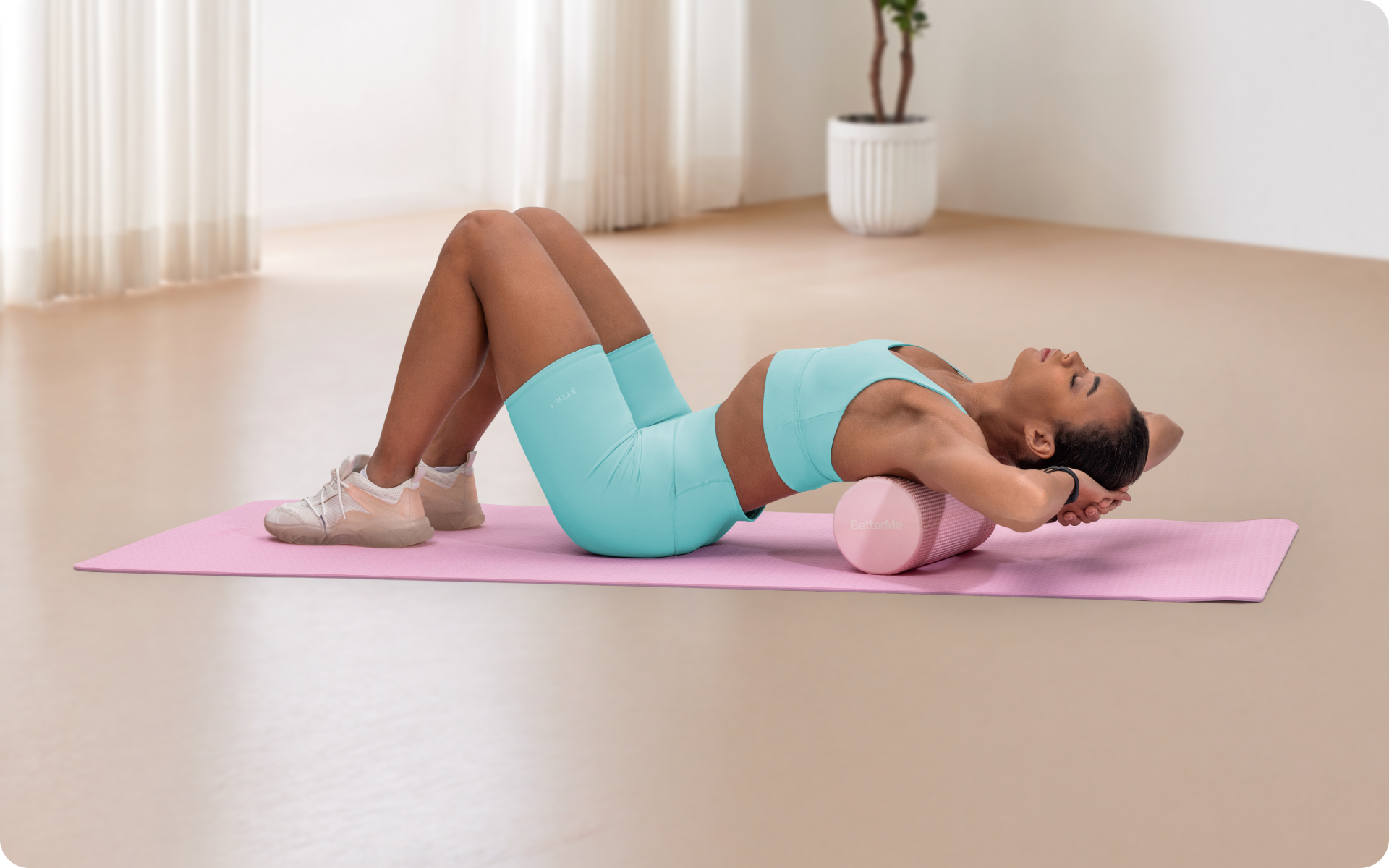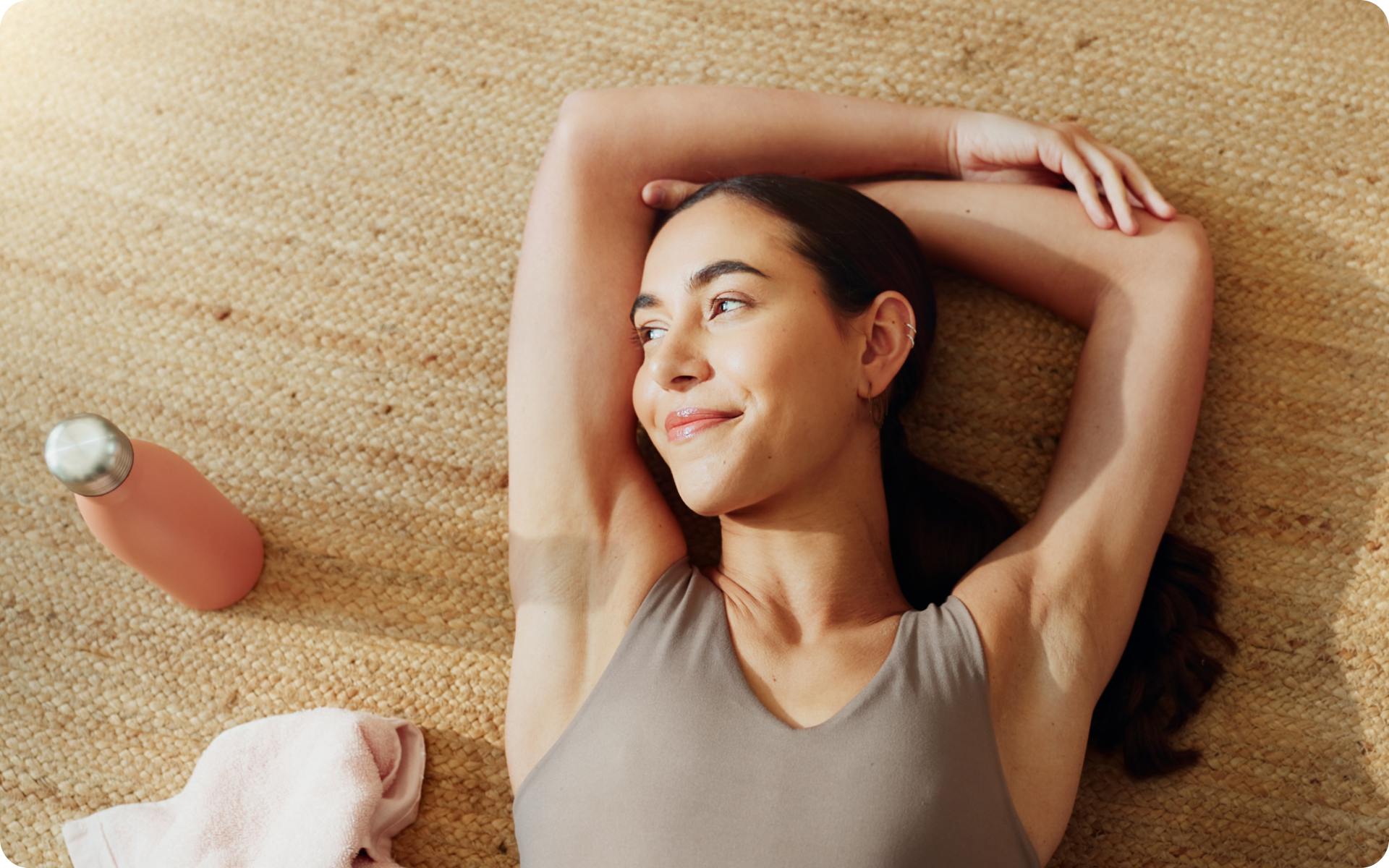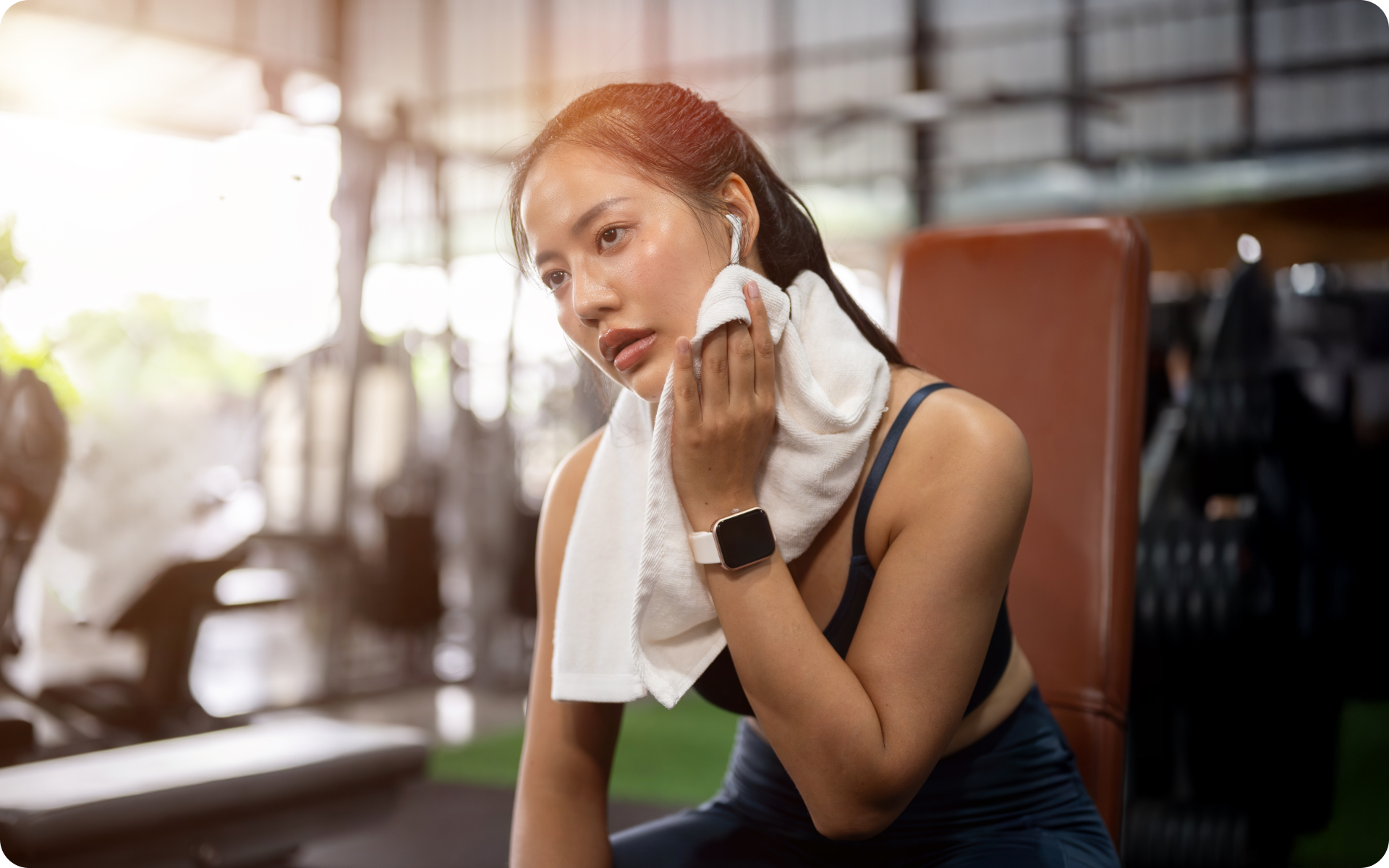If you’re new to working out, you may have heard about compression garments. These garments can be classified as weight loss accessories, and some gym-goers and trainers believe they’re an important part of everyday workouts.
But what exactly are compression garments? Before you decide to take a leap and invest in them, let’s take a look at what they are, how they work, and some benefits they may offer to your workouts or day-to-day life.
What Are Compression Garments?
Compression garments are a particular type of clothing made from special fibers and yarns for the purpose of fitting very tightly on the body in order to compress and support the body and its underlying tissues. These clothes come in different varieties from stockings, bandages, and abdominal binders to sleeves, gloves, bodysuits, and face masks (1, 2).
What Is Compression Clothing Made from?
In order for these garments to fit as required and offer compression therapy to the body they’re applied on, they’re made from elastomeric or spandex fibers that have an impressive extension break and exhibit rapid recovery when tension is released.
The garments won’t break easily when they’re stretched and they can snap back to the original sizing after stretching (1). Examples of these elastic fibers include lycra, polyurethane fibers, yarn, nylon, cotton, and polyester.
Read more: Pilates Workout Sets: Features That Make a Good Pilates Outfit and Where to Shop for High-Quality
What Are the Different Kinds of Body Compression Garments?
Compression clothing comes in two main varieties:
- Medical-grade compression garments
- Sportswear
Medical Grade
As the name suggests, these garments are used in the healthcare field, where they offer compression for disease management and support. Some of the diseases these clothing items can help with include:
- Chronic Venous Insufficiency
This is a condition that is mostly seen in women and it occurs when blood flow in the veins is poor, which leads to increased pressure in the veins.
The insufficiency can be caused by factors such as age, sex, pregnancy, obesity, heredity, phlebitis, and previous leg injury or even lifestyle factors such as a sedentary lifestyle, prolonged standing, inactivity, and occupation.
This disorder manifests as swelling in the legs, skin changes, and pain due to the high pressure in the veins. You may also see varicose veins and skin breakdown as a result. To help manage this disorder, people living with it are encouraged to use compression garments for their legs, such as compression stockings or bandages.
These stockings or bandages help with the better distribution of internal pressure in the legs, which helps position the valves in the legs and allows for easier circulation in the lower extremities (1).
- Hypertrophic Scar Management
This is a type of scar that occurs when the skin suffers major trauma, such as from burns or even surgical incisions. Due to how complicated these scars are, they may lead to aesthetic, psychological, physiological, and functional problems, which can affect the quality of life of the person who is affected by them (1).
To alleviate and prevent the chances of these scars causing such issues, burn victims may be required to wear these compression garments for 23 hours a day every day for up to a year, as it can help with better healing of the scar.
It should be noted that while these medical-grade garments continue to be used for scar management, not everyone is convinced that this type of compression therapy is the best option (3).
- Orthopedic Support
This type of clothing can be used for different functions such as prevention, improved function, and postoperative/rehabilitation support. They come in different knitted varieties such as knee, wrist, ankle, shoulder, and elbow braces, in addition to calf, lumbar, and back supports.
These compression garments for men and women help create a positive change in the body anatomy and increase in body strength, in addition to enhancing motor skills. They can also provide support to paraplegic patients, neonates, the elderly, pregnant and nursing women, and patients with motor disabilities (1).
BetterMe: Health Coaching app helps you achieve your body goals with ease and efficiency by helping to choose proper meal plans and effective workouts. Start using our app and you will see good results in a short time.
- Post-Op Recovery
These compression garments for recovery are worn following a surgical procedure to aid patients in recovery. For example, women who’ve undergone breast surgery or men who’ve undergone the same due to something such as gynecomastia may be advised to wear compression garments for the chest. The garments can also be used after facial surgery, abdominal surgery, and other body contouring operations. The use of these clothing items following a surgical procedure can help reduce the risk of infection and chances of scarring, decrease bruising, reduce swelling, and increase the comfort levels of the patient (4, 5, 6).
Body Shaping
These garments can be used for aesthetic purposes to help give the wearer more shape. A good example is the girdle, a form-fitting undergarment that helps lift the hips and cinch the waist, giving the wearer an hourglass figure.
Sportswear
In addition to medical use and aesthetic purposes, these clothes are also used by sportsmen and everyday gym goers when they participate in competitions or when they work out on a day-to-day basis. They’re often worn to improve physical performance, mitigate fatigue responses, and enhance recovery (1).
What Do Compression Garments Do For You in Sport and Weight Loss?
First things first: it’s important to note that compression garments for weight loss don’t actually make you lose weight. They’re not a magic pill and they won’t magically make you slimmer and lose fat.
Weight loss can only be achieved through a calorie deficit (7) and staying active. For example, by creating a calorie deficit of an estimated 500-750 calories and exercising at least 30 minutes daily, you can lose 1 to 2 pounds a week (8). That being said, there are some benefits of wearing compression garments for weight loss (4).
How to Use Compression Garments for Weight Loss and Athletic Performance
Wearing these clothes may not magically burn fat or turn you into the next Olympic champion, but they can help improve your workout and athleticism, which can help you make notable progress. Here’s how:
- Increased Blood Flow in the Body
When working out, increased blood and oxygen flow to the muscles is essential. The more oxygen and blood a muscle gets, the better your athletic performance will be. You can lift better, run faster, jump higher, etc.
In a study published in the Journal of Sport and Health Science, researchers found that when basketball players wore compression garments – tights and shorts – their lower limbs had better muscle blood flow and muscle oxygenation than when they didn’t have them on. Researchers also found that the participants who wore tights showed better results (9).
This could be translated to say that, on leg day or when doing cardio activities such as running, jumping rope, or even hiking, wearing compression tights could help you be more active, which can burn more calories.
The acts of compression these clothing items provide boost blood flow and oxygen delivery to the tissues. This makes your workouts more efficient and less tiring. When you don’t feel completely drained after a workout, you’re more likely to feel encouraged to exercise again the next day. Working out consistently is one of the ways to lose weight.
- Increased Body Awareness
As they fit quite snugly around certain body parts, they make you more aware of how your body moves or feels as you work out. This can help you improve your posture and technique during certain workouts or sports (3).
In a study published in the Journal of Neurophysiology, researchers found that when study participants wore compression sleeves during the experiment, their reaching accuracy increased. Researchers concluded that the compression apparel increased precision and sensitivity around the joint, which then made the participants more accurate (10).
In weight loss, with better posture and technique, you’ll be able to target the muscles more accurately, thereby getting the most out of your workout routine. In sports, you’ll be able to get better at aiming and perhaps even scoring.
- Injury Prevention and Management
People who are new to working out are usually quite keen to push themselves to the very limit of their endurance, hoping that this can boost weight loss results. While this go-getter attitude can be a good thing as it helps maintain motivation, it more often than not increases your risk for injury.
As explained above, these clothes help increase blood and oxygen flow to the muscles, which automatically helps the muscles move and function better, thereby reducing the risk of injury. Increased body awareness also makes it easier for you to note when something feels off, which can help you stop a movement/exercise before injuring yourself.
If you’ve been injured before or are living with an injury but still have to keep exercising/practicing, wearing such apparel can help prevent the recurrence of the injury and can also help reduce the symptoms of a current sports injury (11).
If you’re dealing with pain, injury, or swelling after a workout or sporting activity, check out our article on how to make a warm compress to help deal with the pain.
Whether you’re a workout beast or just a beginner making your first foray into the world of fitness and dieting – BetterMe has a lot to offer to both newbies and experts! Install the app and experience the versatility first-hand!
- Improved Recovery
Exercising is tiring and also causes tears in your muscles, which need time and rest to repair and recover. We all know the pain and soreness that comes after a day of running or a simple 30-minute weightlifting session – the days after leg day can be the absolute worst sometimes.
Thankfully, research has shown that wearing these clothes during a workout will reduce perceived muscle soreness and swelling and enhance and accelerate recovery from muscle damage (1, 12, 13). This means that you can be back to exercising and training faster and will experience less pain.
However, just because you feel less sore doesn’t mean you don’t need to rest. Always ensure that you rest fully from exercise for at least 24 to 48 hours a week.
Check out our article on somatic healing techniques to learn how to recover from hidden traumas in the mind, body, and spirit.
- Breathability
Nothing is more frustrating than working out in clothes you can’t breathe in or clothes that stick to your body when you sweat and feel constricting due to a lack of airflow, which stops you cooling off after a set.
Luckily, a lot of these workout compression garments are made with properties that allow air permeability, water vapor transmission, UV resistance (1), and other factors to make them as comfortable as possible to work out in.
The more comfortable you are while working out, the more likely you’ll be to give your all physically and mentally to the workout and get the most out of the session.
Read more: How to Style a Sport Jumpsuit: Performance Tips
What Are the Best Compression Garments?
When choosing clothes, you may be tempted to go for big brand names, thinking that they’ll work best for you. However, it may be a good idea to look beyond the name when it comes to workout gear, particularly with body compression garments. Here are some things you should look out for when choosing your compression clothing:
- Comfort Above Everything
As with your everyday clothes, your compression garments should be comfortable. This means they should be tight enough for you to feel compressed but not enough that you feel restricted. Make sure you can move and breathe freely while wearing them.
- Go for Some Leggings
When doing many weight loss exercises, especially cardio, your lower body tends to take the brunt of these workouts. Some compression leggings are an excellent idea to help keep the blood flowing in your legs and prevent DOMS. In addition to leggings, other compression garments for legs include socks, leg sleeves, and shorts.
- Upper-Body Options
These come in many options, such as sports bras, vests, and long and short-sleeved t-shirts. They comfortably support your chest, abdomen, and arms to keep you from jiggling.
For larger-chested women, a compression sports bra may offer more support than a regular sports bra. They minimize your breasts without making you feel like you have a weight on your chest and effectively prevent unwanted bounce.
Who Needs Compression Garments?
These types of clothing can be worn by almost anyone. In sports and exercise and in terms of body shaping, anyone can wear such compression garments if they so choose.
However, with medical grade compression garments, we would urge you to first speak to your doctor if you’re dealing with an issue or ailment and you believe you need one. For example, people who are living with peripheral arterial disease may be harmed by wearing compression garments for too long. A professional will be able to explain exactly what type of compression garment you need, how tight it should be, and how long you need to wear it in order to safely deal with your health issue.
Failure to do this may aggravate the issue, which could make it worse and lead to more pain/discomfort.
How Long Should I Wear Compression Garments After Liposuction?
According to the American Society of Plastic Surgeons, these garments are typically worn for between one and three weeks after surgery. However, it’s best to seek advice from your doctor as they will be best acquainted with your situation. The duration of wearing this garment is dependent on too many unique factors for there to be one single answer for this (6).
What Are the Disadvantages of Compression Clothing?
Compression garments are generally safe to wear and have little to no disadvantages if they’re worn correctly. However, if the clothes aren’t fitted as they should be (i.e they’re too tight), they may lead to some common drawbacks such as (14):
- Skin irritation and itching
- Pain and discomfort
- Superficial vein thrombosis
- The spread of bacterial and/or fungal infection
Some atypical and potentially devastating complications that could come from the improper use of compression garments include:
- Nerve damage
- Venous thromboembolism
- Arterial thrombosis
- Skin or limb necrosis
No, it’s not. As seen above, wearing such clothes for too long or if they’re too tight can lead to a number of complications. Yes, they do. From the studies included above, it can be seen that these clothing options bring an advantage to the wearer. However, what they won’t do is magically help you burn fat. They may cinch your waist for a few hours, but they won’t flatten your stomach. As previously mentioned, they don’t burn any fat. They can, but only temporarily. Once you take them off, your body will go back to its original appearance.Frequently Asked Questions
Is it OK to wear compression clothing all day?
Do compression garments really work?
Do compression garments flatten the stomach?
Can compression garments reshape your body?
The Bottom Line
Compression garments have their place in the fitness world – they can enhance performance and offer recovery and injury prevention. However, these clothes cannot be used as a substitute for a healthy calorie deficit diet and exercise for weight loss. Remember that clothes have no magical power to burn or melt away fat.
DISCLAIMER:
This article is intended for general informational purposes only and does not serve to address individual circumstances. It is not a substitute for professional advice or help and should not be relied on for making any kind of decision-making. Any action taken as a direct or indirect result of the information in this article is entirely at your own risk and is your sole responsibility.
BetterMe, its content staff, and its medical advisors accept no responsibility for inaccuracies, errors, misstatements, inconsistencies, or omissions and specifically disclaim any liability, loss or risk, personal, professional or otherwise, which may be incurred as a consequence, directly or indirectly, of the use and/or application of any content.
You should always seek the advice of your physician or other qualified health provider with any questions you may have regarding a medical condition or your specific situation. Never disregard professional medical advice or delay seeking it because of BetterMe content. If you suspect or think you may have a medical emergency, call your doctor.
SOURCES:
- Venous Insufficiency (2024, ncbi.nlm.nih.gov)
- Compression Therapy (n.d., my.clevelandclinic.org)
- Pressure-garment therapy for preventing hypertrophic scarring after burn injury (2024, pubmed.ncbi.nlm.nih.gov)
- The Use of Postoperative Compression Garments in Plastic Surgery—Necessary or Not? A Practical Review (2023, pmc.ncbi.nlm.nih.gov)
- Effect of Compression Garments on Post-Abdominoplasty Outcomes: A systematic Review of the current Evidence (2024, sciencedirect.com)
- The importance of compression after plastic surgery (2023, plasticsurgery.org)
- Optimal Diet Strategies for Weight Loss and Weight Loss Maintenance (2020, pmc.ncbi.nlm.nih.gov)
- Steps for Losing Weight (2023, cdc.gov)
- Sports compression garments improve resting markers of venous return and muscle blood flow in male basketball players (2023, sciencedirect.com)
- Effects of a compression garment on sensory feedback transmission in the human upper limb (2018, pmc.ncbi.nlm.nih.gov)
- Lower extremity compression garments use by athletes: why, how often, and perceived benefit (2021, bmcsportsscimedrehabil.biomedcentral.com)
- Compression Garments for Recovery from Muscle Damage: Evidence and Implications of Dose Responses (2022, journals.lww.com)
- Effect of compression garments on delayed-onset muscle soreness and blood inflammatory markers after eccentric exercise: a randomized controlled trial (2017, pmc.ncbi.nlm.nih.gov)
- Risks and contraindications of medical compression treatment – A critical reappraisal. An international consensus statement (2020, pmc.ncbi.nlm.nih.gov)
